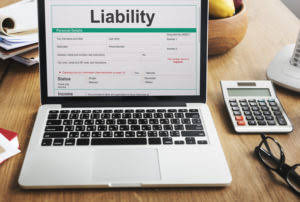Content
- Supercharge your skills with Premium Templates
- What Is Goodwill?
- Goodwill (Accounting): What It Is, How It Works, How To Calculate
- Understanding Goodwill
- Meaning of goodwill in English
- How Does Goodwill Affect Financial Statements?
- Consider Goodwill in The Sale of Your Business
- Limitations of Goodwill

For the FR exam, if the amount is payable in one year, the candidate will be given a discount rate (%) and be asked to calculate this. If the amount is payable in more than one year, the candidate will be given a discount factor as a decimal. The key is to initially recognise the amount payable at present value in goodwill and as a liability. what does goodwill mean Badwill can also refer to the negative effect felt by a company when investors discover it has done something that is not in accordance with good business practices. Although typically not expressed in a dollar amount, badwill can result in a loss of revenue, clients, suppliers, and market share and may even prompt legal action.

Corporations use the purchase method of accounting, which does not allow for automatic amortization of goodwill. Goodwill is carried as an asset and evaluated for impairment at least once a year. There’s a significant difference between goodwill and other intangible assets, such as a patent, intellectual property, or research and development. As such, it can’t be bought or sold independently, unlike intangible assets such as copyright, for example.
Supercharge your skills with Premium Templates
HP’s mistake, in addition to questions over the amounts it initially decided to write down goodwill by and subsequently booked, demonstrates that the concept of goodwill is uncertain and open to interpretation. To determine goodwill amounts, companies usually rely on their own accountants, but they will also turn to valuation consultants to help estimate. Practice goodwill refers to the amount of goodwill specifically for practices, such as a law firm. Practice goodwill is similar to business goodwill as it considers the practice’s overall value.
There are also many vendors who buy this merchandise in bulk, and they send the merchandise to third-world countries. This process is somewhat subjective, but an accounting firm will be able to perform the necessary analysis to justify a fair current market value of each asset. Negative goodwill is usually seen in distressed sales and is recorded as income on the acquirer’s income statement.
What Is Goodwill?
Goodwill is valuable to a buyer because it represents your company’s ability to take physical assets and generate cash flow into the future. In financial modeling for mergers and acquisitions (M&A), it’s important to accurately reflect the value of goodwill in order for the total financial model to be accurate. Below is a screenshot of how an analyst would https://www.bookstime.com/articles/how-to-become-an-enrolled-agent perform the analysis required to calculate the values that go on the balance sheet. For an actual example, consider the T-Mobile and Sprint merger announced in early 2018. The deal was valued at $35.85 billion as of March 31, 2018, per an S-4 filing. The fair value of the assets was $78.34 billion and the fair value of the liabilities was $45.56 billion.
In other words, goodwill is the proportion of the purchase price that is higher than the net fair value of all the assets and liabilities included in the sale. Accounting goodwill is sometimes defined as an intangible asset that is created when a company purchases another company for a price higher than the fair market value of the target company’s net assets. But referring to the intangible asset as being “created” is misleading – an accounting journal entry is created, but the intangible asset already exists. The entry of “goodwill” in a company’s financial statements – it appears in the listing of assets on a company’s balance sheet – is not really the creation of an asset but merely the recognition of its existence.
Goodwill (Accounting): What It Is, How It Works, How To Calculate
Thus, company A paid $1,600,000 premium above the company’s net assets to acquire its assets, which add to its earning power. While goodwill officially has an indefinite life, impairment tests can be run to determine if its value has changed, due to an adverse financial event. If there is a change in value, that amount decreases the goodwill account on the balance sheet and is recognized as a loss on the income statement. Goodwill is an intangible asset that can relate to the value of the purchased company’s brand reputation, customer service, employee relationships, and intellectual property. Goodwill represents a certain value (and potential competitive advantage) that may be obtained by one company when it purchases another. It is that amount of the purchase price over and above the amount of the fair market value of the target company’s assets minus its liabilities.
- This is because at the point of bankruptcy/insolvency, the “goodwill” that the company once had is no longer of any value.
- The definition of a reporting unit plays a crucial role during the test; it is defined as the business unit that a company’s management reviews and evaluates as a separate segment.
- If you own a machine shop that makes $250,000 per year in SDE (cash flow) but must own $10 million in equipment, there is not a goodwill balance.
- Upgrading to a paid membership gives you access to our extensive collection of plug-and-play Templates designed to power your performance—as well as CFI’s full course catalog and accredited Certification Programs.
- Fortunately, there’s a step-by-step process to follow when calculating the goodwill of any business.
In short, goodwill impairment is a message to the markets that the value of the acquired assets has fallen below the amount that the company initially paid. The concept of goodwill comes into play when a company looking to acquire another company is willing to pay a price premium over the fair market value of the company’s net assets. According to both GAAP and IFRS, goodwill is an intangible asset which has an indefinite life. However, businesses are required to evaluate goodwill in business for impairment (when the market value drops below the historical cost) on a yearly basis.
To do this, a candidate needs to work out how many shares the parent company has issued to the previous shareholders (owners) of the subsidiary as part of the acquisition. To work out the value given to the previous owners, the number of shares issued is multiplied by the parent’s share price at the date of acquisition. The amount then also needs to be added to the parent’s share capital and other components of equity (share premium) to reflect the shares issued (see Example 3 later in the article).

